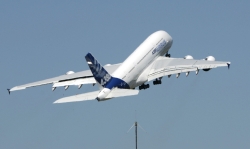 Every year billions of birds migrate from breeding areas to regions where they spend the winter. The incredible mobility of birds, not only during migration, but also during daily movements between resting and feeding areas is an illustrative example of the variability and complexity of the global environment. Because of such varying movements, birds pose a non-negligible threat to flight safety: in fact, collisions between birds and aircrafts can cause very serious and sometime devastating accidents, with severe consequence in terms of human lives and economic impacts.
Every year billions of birds migrate from breeding areas to regions where they spend the winter. The incredible mobility of birds, not only during migration, but also during daily movements between resting and feeding areas is an illustrative example of the variability and complexity of the global environment. Because of such varying movements, birds pose a non-negligible threat to flight safety: in fact, collisions between birds and aircrafts can cause very serious and sometime devastating accidents, with severe consequence in terms of human lives and economic impacts.
In general, aircraft and engines are designed to resist impacts with birds up to certain design conditions, like number of impacts, size and weight of birds, relative speed, etc. Nevertheless there are circumstances when impacts with birds can exceed such safety margins and can lead to permanent and even devastating damage to aircraft. The increase of the safety aspects in the design of aircraft always has a direct economic impact on their overall cost and operations. As such, other means are welcome to reduce the impact of such bird strikes. Currently, these means include, amongst others, scaring sounders, prey birds, hunters, control of the environment, as well as bird-strike reporting.
The bird-strike problem can be classified according to two different scales: âon-routeâ and âat and near airportâ. Considering that birds typically fly below 3,000 feet (915 m), the problem of bird strikes seems to appear either during low-altitude flights (mainly relevant for airforce operations) or near airports (during take-off and landing).
Having identified this need and considering that Space can help Civil Aviation, the Integrated Applications Promotion (IAP) programme has now released an open competitive invitation to tender for a feasibility study to investigate the technical and programmatic issues of a system to mitigate the risk of bird strikes.
For further information please refer to the announcement of this ITT on the IAP website and on EMITS.


